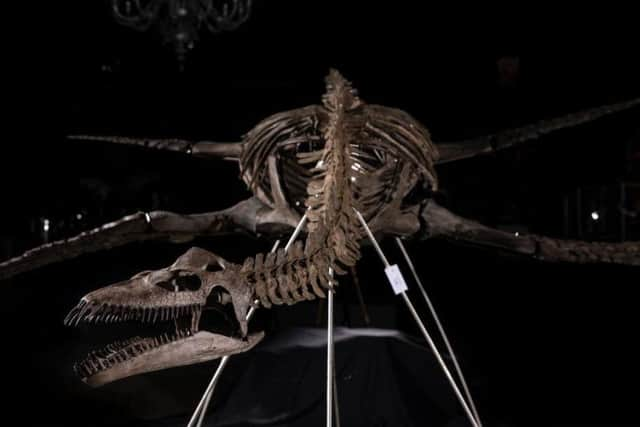Is the Loch Ness Monster real? Sightings, pictures, and whether Scotland's famous creature really exists


After a huge skeleton was discovered on a Scottish beach in the wake of Storm Ciara, many have speculated that it could belong to Scotland’s favourite monster, Nessie.
Photos of the mystery carcass, taken on Balmedie Beach in Aberdeen, emerged after the storm had cleared.
Advertisement
Hide AdAdvertisement
Hide AdThe Loch Ness monster has been a subject of debate for decades, with countless sightings reported over the years.


Here’s everything we know for sure about the mythical (?) monster.
Where did the rumours of the Loch Ness Monster start?
While rumours of an enigmatic creature wriggling around in the loch can be traced back all the way to the sixth century, the Loch Ness Monster was brought to global attention in 1933 when an article regarding a “whale-like fish” was published in the Inverness Courier.


That article acknowledged that "Loch Ness has for generations been credited with being the home of a fearsome-looking monster". This was also where the creature gained the famous - and perhaps rather unfair - title of “monster”.
Where has Nessie been spotted?
Since the famous 1933 account, there have been numerous high-profile investigations into Nessie, often employing advances in technology to try and prove the creature’s existence.
Only a year later, in 1934, came the “Surgeon’s Photograph”, taken by Robert Kenneth Wilson and published in the Daily Mail. It claims to be the first image ever captured of Nessie’s neck and head.
However, later analysis revealed that the scale of the photo was misleading and that the “monster” it depicted would only have been about 2 or 3 feet long. It is now largely agreed to have been an elaborate, and fairly successful hoax.
In 1954, sonar readings taken by a fishing boat showed something large keeping pace with it around 500 feet below the surface.
Advertisement
Hide AdAdvertisement
Hide AdThere have been several attempts to capture video footage of Nessie as well, with the most impressive coming from a lab technician in 2007.
A marine biologist at the Loch Ness centre described it as the best footage he’d seen, although he also suggested the creature in it was likely an otter or a seal.
In 2011, a sonar image was taken of a large object which appeared to be following a boat, although a scientist from the National Oceanography Centre later attested that it was probably a bloom of algae and zooplankton.
Finally, in 2014, Apple Maps appeared to capture the image of a large creature lurking just below the surface of the loch. It appeared to be around 30 metres long and while it has never been definitively identified, some suggested it may just have been the wake of a boat.
What sort of creature could Nessie be?
In 1933, it was pointed out that the creature appeared to bear a striking resemblance to the Plesiosaur – an aquatic dinosaur with a long neck which is thought to have gone extinct around 66 million years ago.
Critics have since pointed out that the Plesiosaur was probably a cold-blooded creature which would not take kindly to the chilly waters of Loch Ness. And, if it was warm-blooded, it would require far more food to sustain it than the loch could provide.
It would also need to surface several times a day for air, which would surely lead to far more sightings - although some have questioned whether it would be able to lift its head out of the water in the first place.
However, some have proposed that Nessie could be a creature which evolved from the Plesiosaur to adapt to its Scottish home, perhaps even gaining the ability to breathe without breaking the surface.
Advertisement
Hide AdAdvertisement
Hide AdLess exciting theories have ascribed Nessie sightings to various modern animals. Greenland sharks can grow to around 20-feet long and have been known to appear near Scotland. They can survive in fresh water and would happily dine out on the loch’s fish.
However, when a team of scientists from New Zealand tried to document every kind of organism in the loch using DNA samples taken between 2018 and 2019, they found no evidence of Greenland sharks.
They did find evidence of European eels, and concluded that these may account for the majority of sightings.
Did the new skeleton belong to Nessie?
The skeleton which has been taken by some as the most recent “proof” of Nessie’s existence actually washed up some 120 miles away from Loch Ness, although it has been suggested that the creature escaped into the sea only to find itself unable to adapt to its new saltwater environment.
However, the Scottish Marine Animal Stranding Scheme later confirmed that it was in fact the remains of a Minke whale which had originally washed ashore last October and had simply been uncovered by the recent storm.
So the bad news is that they do not prove Loch Ness monster’s existence but the good news is that they don’t prove Nessie is dead either!
